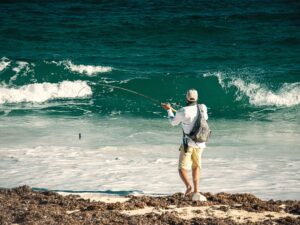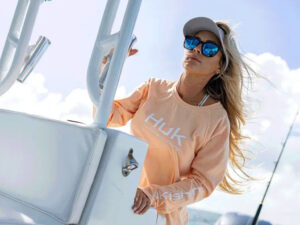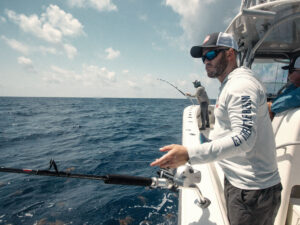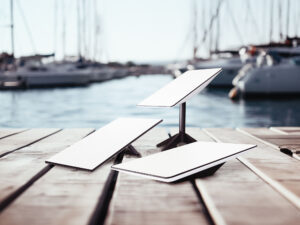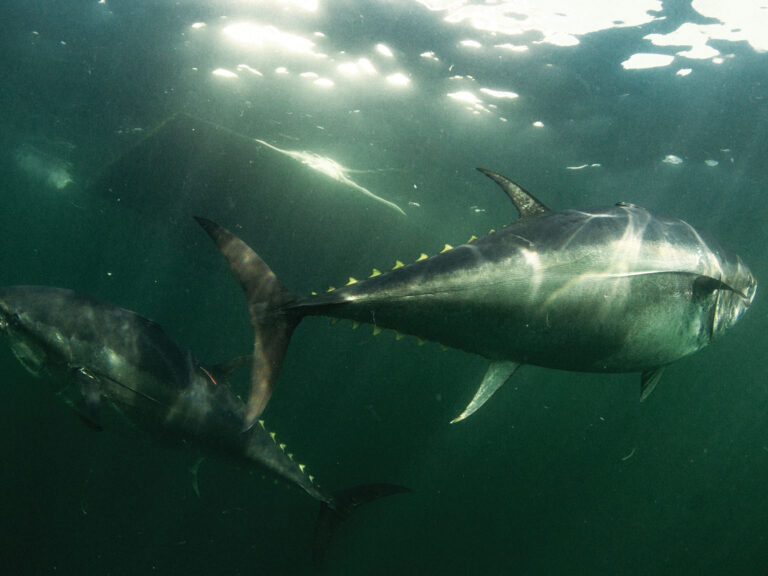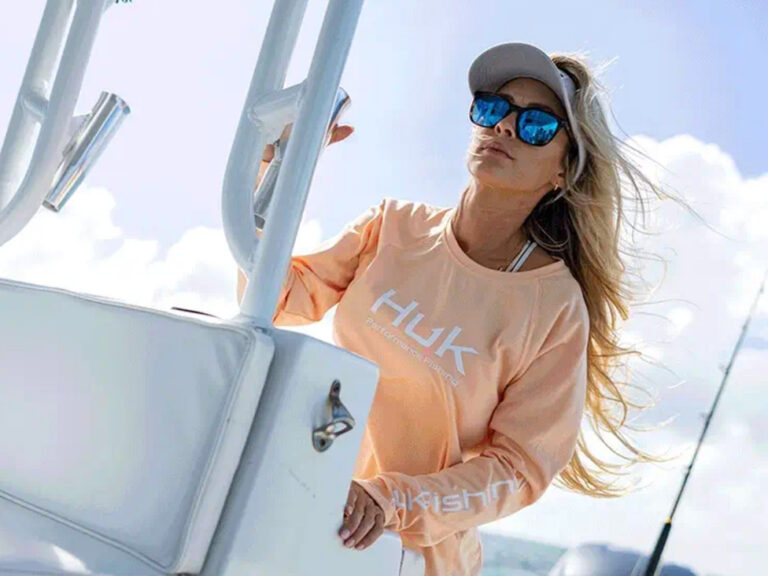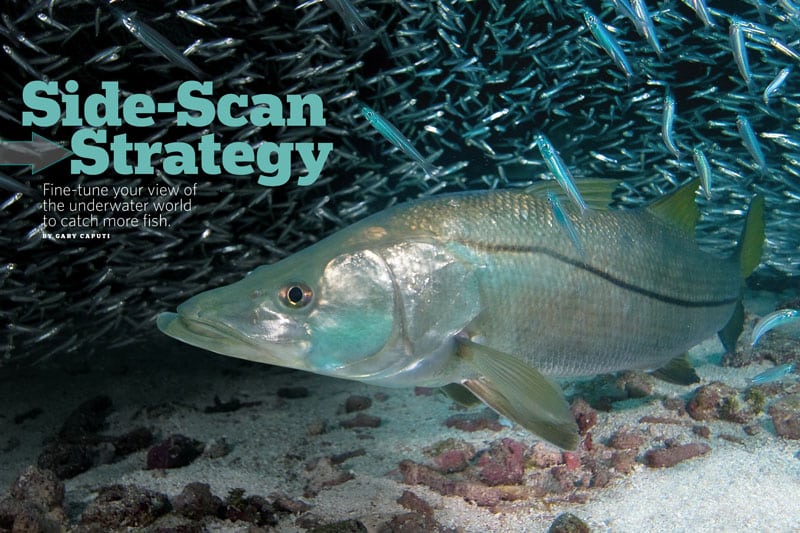
Side-scan sonar has the ability to image structure and fish well to the sides of a boat and in the water column below with far more clarity than traditional sonar. Humminbird’s Bill Carson, who has more than 1,000 hours using side-scan under his belt, explains it.
“Think of a football field under 30 feet of water, and you want to locate structure on the field. With traditional sonar, you can image 10-foot swaths of the bottom with each transit: All you see is what is in the transducer cone at that depth. With side imaging, you ride across the field on the 50-yard line and see everything from the surface to the bottom, from goal post to goal post, in a single pass with greater clarity and greater target discrimination.”
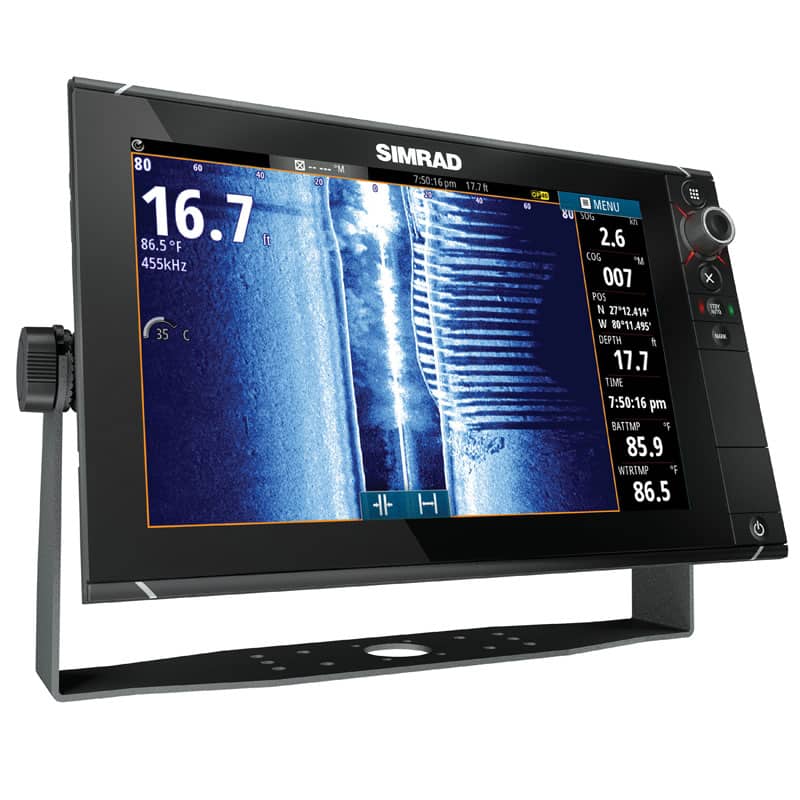
Leap Ahead
Side-scan-image clarity is a result of higher-frequency sound waves transmitted in thin slices like an MRI. “Most traditional sonar units transmit at 50 and 200 kHz, while side-scan works at 455 and 800 kHz so you get more data back,” says Navico’s Matt Laster. “At 455 kHz the unit offers more range, while 800 kHz provides sharper image quality at ranges under 120 feet.”
The screen images are startling. A school of bait that’s a red blob on traditional sonar shows up as individual baitfish, perhaps with larger game fish in or below the school. It can reach out a few hundred feet to either side, which helps determine how large the school is. Game fish that look like arches on regular sonar look like fish on side-scan. The difference is even more apparent with structure. Large wrecks are identifiable right down to the fish around them, and when it comes to identifying smaller objects and low-lying structure, it’s otherworldly.
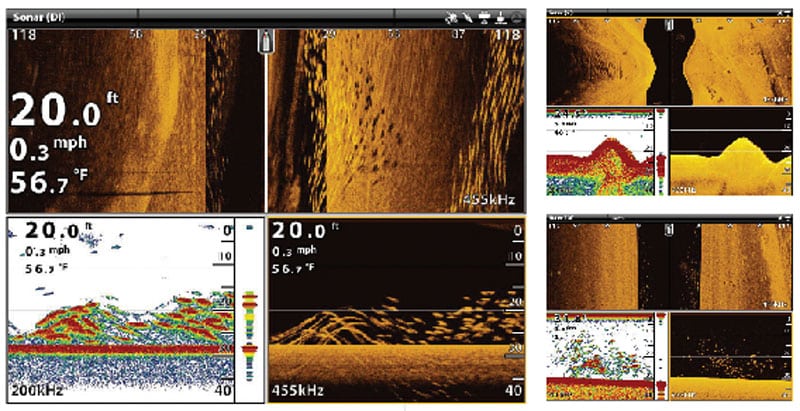
Wrecks Revealed
Once I became accustomed to this different view of the world beneath the surface, I went hunting. I’d been collecting “numbers” for years, but some wrecks avoided detection.
Decades of deterioration and shifting sand had reduced their profile to the point that standard sonar simply didn’t see them. I started going to numbers — or the “PA” (position approximate) wreck icons on my chart plotter — for a new look. I’d zoom in the plotter screen, turn on the side-scan, and run an overlapping search grid. Each time I saw something, even at the limits of the range, I’d save it as a waypoint, then go back and scan it close up. The first day out, I found a schooner that went down in the 1800s in 60 feet of water. All that was left was the outline of the hull on the sand and some debris. You wouldn’t see the low relief with traditional sonar, but it’s a great spot for fluke and sea bass.
Another old schooner, broken up and unrecognizable, showed clearly with side-scan as a field of ballast rocks and a pile of anchor chain. It holds fish and rarely gets a look from other boats.
A high spot in 70 feet of water that I knew was a mussel bed lit up when I hit it with side-scan. Down the middle was a 60-foot beam with radiating ribs — the remains of a wooden wreck — and the tog are all over it in late fall.
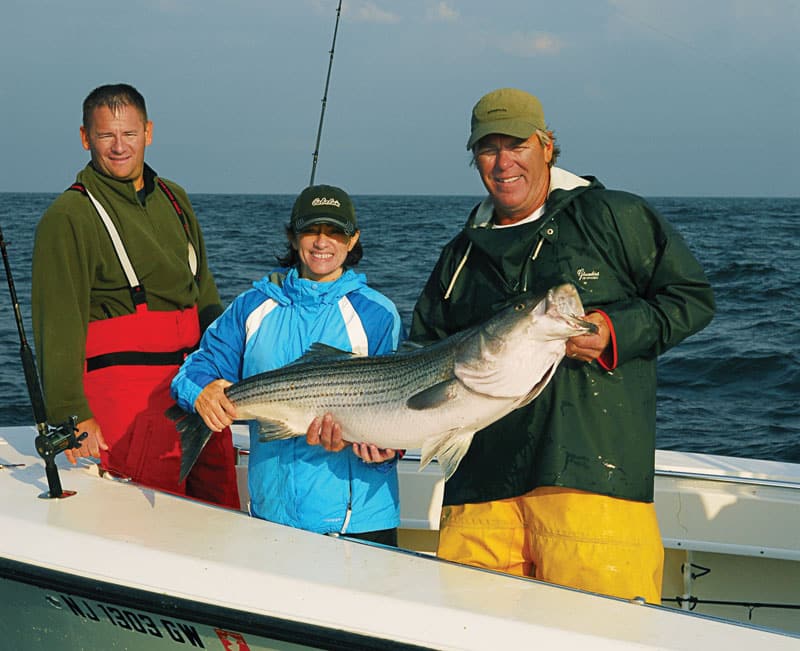
Pinpoint Bait, Find Fish
Bill Carson described fishing the Race off Montauk, a long ridge that creates massive tidal rips where striped bass gather in great numbers, but locating feeding stations is tricky. Carson runs his boat parallel to the ridge on the down-current side and locates bass with side imaging, then sets up his drift accordingly. It’s a simple technique that works anywhere game fish use structure as ambush points.
Capt. Terry Sullivan, a New Jersey striper guide who relies on live bunker for bait, uses side-scan to help him fill his livewell. “Frequently, bunker schools are down in the water column, especially early in the morning,” says Sullivan. “The side-scan makes finding them much easier because I can search a wide area, and then position the boat perfectly before I throw the cast net. It’s a huge timesaver, but that’s only the beginning.”
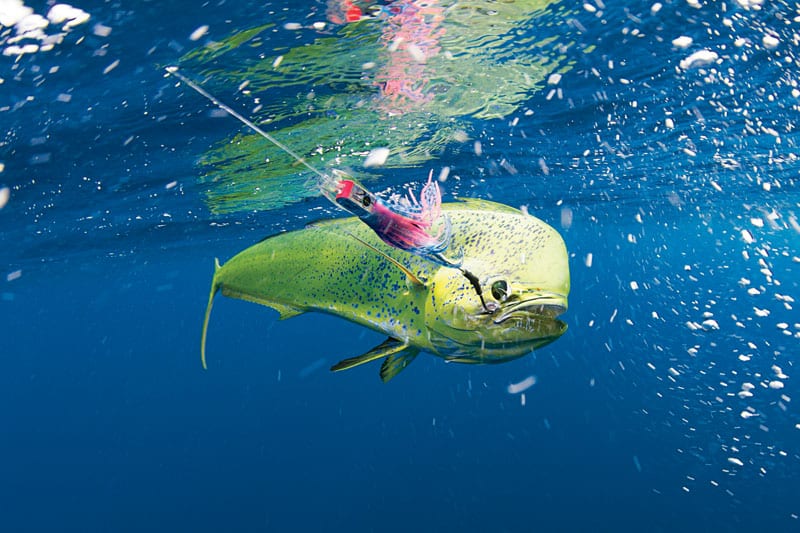
Sullivan cruises alongside bait schools looking into and under them to see if there are bass lurking, a typical feeding behavior. “I also use the down-scan to ground-truth my broadband sonar,” he says. “It gives better detail of bait, game fish and structure.
Mark Maus — a tournament fisherman out of Sarasota, Florida — competes in offshore, kingfish and even tarpon tournaments. He’s a regular user of Simrad StructureScan on his 36-foot and 24-foot Yellowfin boats, and claims it’s the best technology ever.
“In kingfish tournaments in the Gulf, I catch fresh, live bait each day, which means running to rigs,” Maus says. “One pass around a rig with the side-scan, and I know if there is bait on it and exactly where it is before I drop a sabiki. If I don’t see any on the LCD, I’m gone. If I do, I position the boat over it the first time, every time. Unless I’m fishing water too deep for the side-scan and down-scan, I never use my regular sonar.”
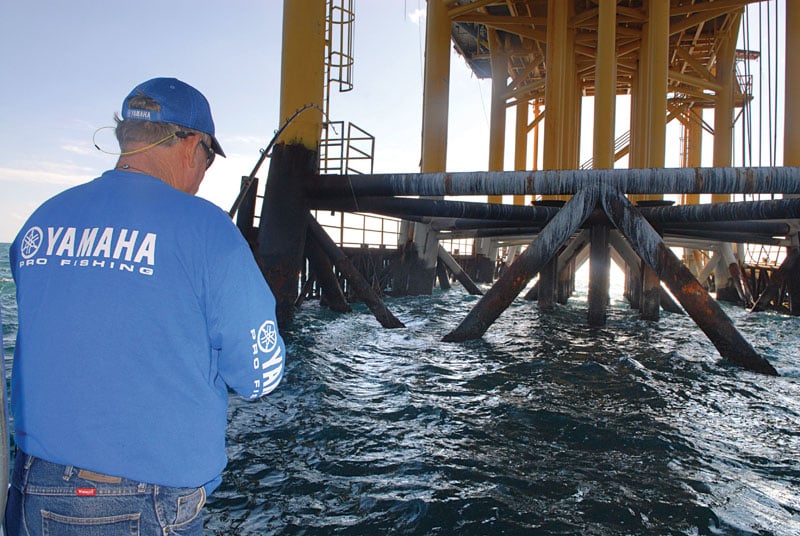
Tidewater to Bluewater
Ed Zyak — a shallow-water guide in Jensen Beach, Florida — fishes the Indian River Lagoon from a 22-foot bay boat equipped with side imaging from Humminbird. “When the snook are in the tributary rivers, they hide under docks, around boats and in depressions on the bottom, and side imaging helps me find them,” he says. “It’s a huge timesaver. You avoid casting to spots where the fish aren’t. It has made me reconsider a lot of what I thought I knew about these fish by giving me a look into their world that I never had before.”
Maus loves to fish Boca Grande Pass on Florida’s west coast for tarpon, and the side-scan on his 24-foot bay boat is his ace in the hole. “There are usually so many boats there that you lose the readings on traditional sonar because of the interference,” he says. The side-scan runs on a different frequency, so that doesn’t happen, and it pinpoints feeding stations where tarpon hold in the current. Traditional sonar shows them only when you’re right on top of them, and often that’s too late. Side-scan shows me the feeding lanes away from the boat, and I can plan my next drift to be on the fish.”
Side-scan doesn’t have the depth capabilities of traditional sonar, as most units reach out 200 to 300 feet to either side of the boat, but it still has benefits when hunting tuna, billfish and dolphin. Maus uses it for finding pods of bait in open water and searching under weed lines to see if there are any dolphin home. Canyon trollers can eyeball bait pods they might miss by 100 feet with their sonar, and that can make the difference between hooking up and getting skunked.
It’s been 10 years since the introduction of affordable recreational side-scan, and during that time, it has been improved and refined, yet seeing it on saltwater boats is still a rarity. The professionals who swear by it hope it stays that way. It’s a tool that adds immensely to your success in so many ways.

